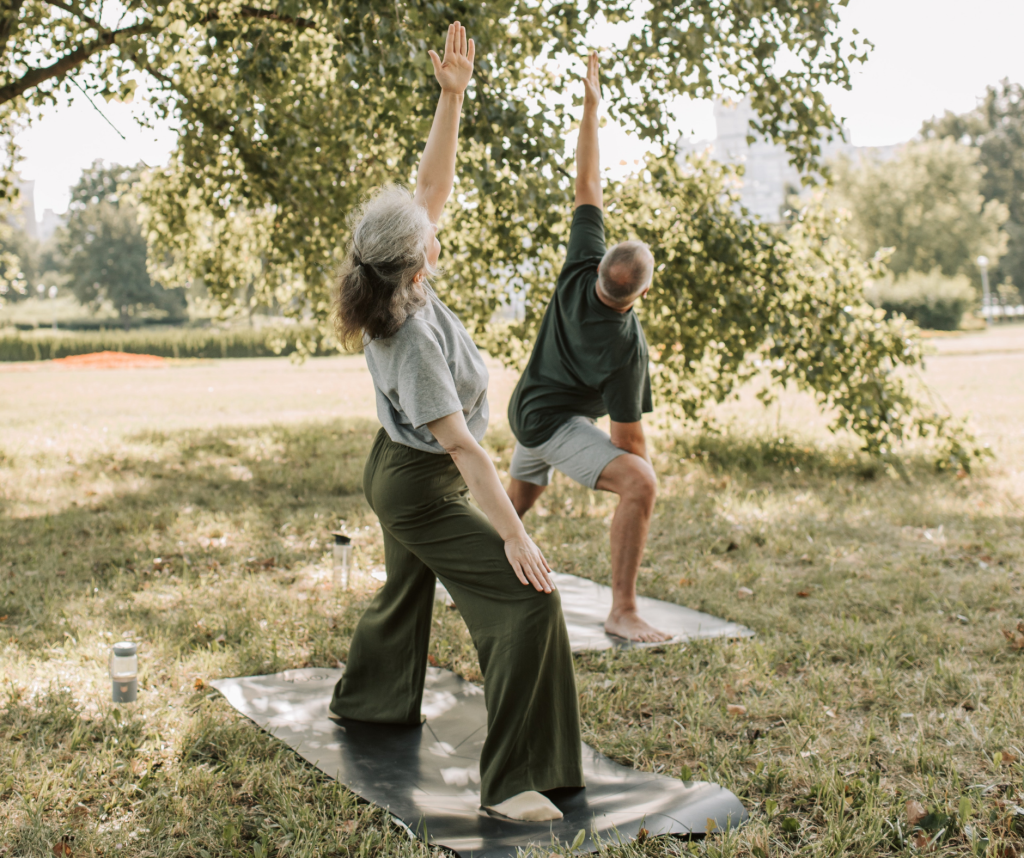
As we age, it can be harder and harder to keep with up with a good exercise routine. This can be especially difficult for seniors who may have mobility or other health issues. Even though it’s widely known that exercise is good for you, it can be so intimidating for seniors that they’d rather just skip it.
The good news? There is a solution. A form of exercise that can be done by most people, even if they have trouble with walking or other activity – yoga! Yoga may seem intimidating too, but it’s important to know that there are many forms. Your mind may go to “hot yoga” or complicated poses that look impossible to do. But there are many poses that can be done by seniors, even from a seated position (chair yoga!).
In this article we’ll discuss several benefits of helping your parent or loved one incorporate yoga into their lives, both physical and mental.
It improves balance
Falling is a huge concern for seniors living at home on their own. Falls are the most common cause of nonfatal trauma-related hospital admissions among older adults, and one of the main causes is loss of balance. That’s where practicing yoga can literally be a lifesaver – the movements are widely known for helping improve balance.
As we get more sedentary with the aging process, our sense of balance atrophies. The term ‘Use it or lose it’ really does apply. Yoga tones muscles and works on your sense of position in space. The slow, measured movements and strengthening poses improve balance, and when practiced regularly, can help prevent a potentially devastating fall.
It strengthens bones and protects joints
According to AARP, “People in their 50s often develop the beginning stages of osteoporosis and low bone density. Studies consistently show that the weight-bearing activity of yoga helps slow bone thinning, reducing the risks of osteoporosis. Practicing yoga regularly can help lubricate joints, staving off debilitating disorders like carpal tunnel syndrome and arthritis.”
Yoga can be especially beneficial for the millions of seniors who suffer from arthritis. According to the Arthritis Foundation, “Yoga is proven to help people with arthritis improve many physical symptoms like pain and stiffness, and psychological issues like stress and anxiety. People with various types of arthritis who practice yoga regularly can reduce joint pain, improve joint flexibility and function, and lower stress and tension to promote better sleep.”
It helps keep weight (and blood pressure) under control
Trouble resisting the cookie jar? Practicing yoga enhances concentration and improves willpower by shifting focus toward wellness rather than instant gratification. AARP explains: “In a 2014 study out of India, published in BMC Complementary and Alternative Medicine, researchers reported that people with diabetes who did yoga 3-6 days per week for 8 weeks, shed more pounds and inches than those who walked for the same time period.” Being overweight is a big risk factor for many health conditions, including diabetes and heart disease.
Another risk factor to keep in check is blood pressure: “Yoga has a powerful effect on stress and hypertension and can help people reduce the amount of medication they need,” says Amy Wheeler, yoga professor at California State University at San Bernardino. In a review of 17 studies published in Evidence-Based Complementary and Alternative Medicine, researchers reported significant reductions in blood pressure for interventions incorporating three basic elements of yoga practice: postures, meditation, and breathing. Researchers speculate that the slow, controlled breathing inherent in yoga practice decreases nervous system activity, which helps manage blood pressure levels.” (via AARP)
It helps with brain & mental health
Beyond the physical, yoga has a big impact on mental and brain health. A 2016 study reported that practicing yoga relaxation techniques for 30 minutes had immediate beneficial effects on brain function and performance. Focusing on the breath and synchronizing it with movement helps keep the mind clear and engaged, and breathing exercises help harmonize the left and right hemispheres of the brain, which correlate to the logical and emotional sides of the personality.
It’s also great for boosting your mood and reducing anxiety. The combination of breathing, meditation, and movement creates an overall sense of well-being. This is due to a boost in levels of the brain chemical GABA, which helps calm nerves. Practicing yoga induces the relaxation response that helps regulate the way the body responds to stress. Yoga stops the flight or fight stress response, which reduces your heart rate, lowers blood pressure, and eases respiration.
Conclusion:
Yoga can be an accessible way for your aging parent to experience all the benefits of an exercise routine and then some. It can be practiced in a class environment, one-on-one or even virtually through an online program. If a gentle yoga program that involves standing isn’t an option, consider chair yoga. Check out this handy guide to learn more about it from SeniorLifestyle.com.
If you aren’t able to help your parent or loved one with yoga or other exercise, consider hiring a non-medical caregiver to help. Our caregivers can assist with doctor-approved exercise, and many are specifically trained in fall prevention through our Fall Prevention Specialty Program.
If you’d like to learn more about how we can help keep your parent safe at home, simply fill out this form, and a client service specialist will be in touch at your convenience.